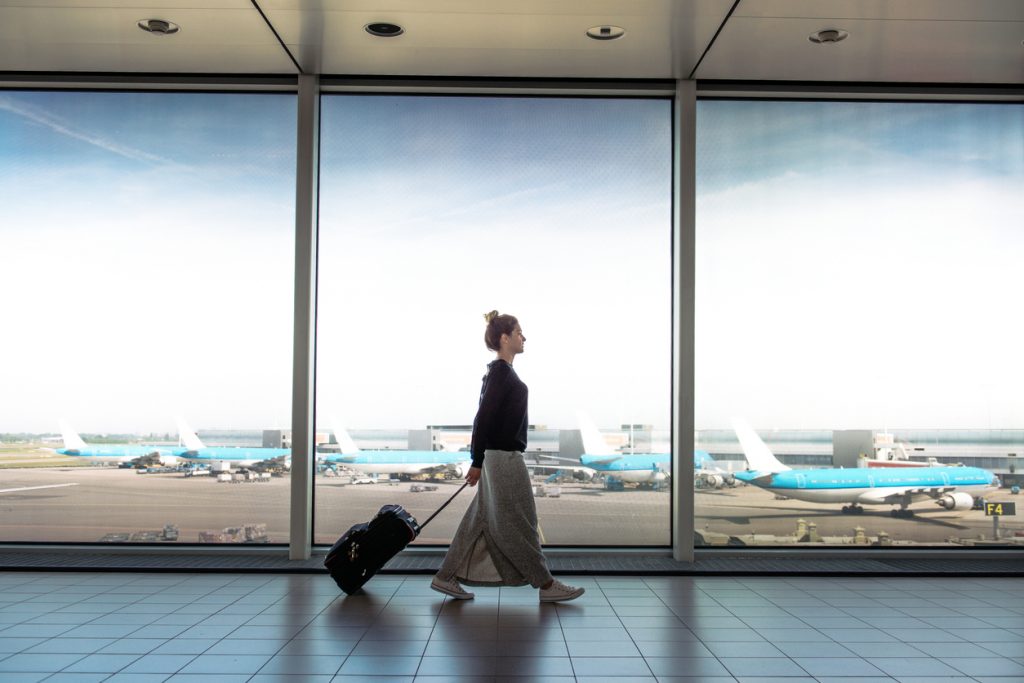There’s no doubt that the coronavirus pandemic has had an unprecedented impact on the travel industry. It is sure to change how we think and act about travel in the future. But what will travel be like after the coronavirus?
While some airlines are still operating, including rescue and repatriation flights to take people back to their home countries, lots of carriers have all but shut down for the time being. Additionally, hotels are laying off employees, cruise lines have stopped trips through the summer, and travellers around the world are scrambling to cancel trips and get refunds. The travel industry has never faced disruption and panic on this scale in recent memory.
Trips to London are being replaced by virtual tours of its museums, and travellers who once looked forward to food tours of Italy are tuning in to pasta-making live streams instead.
Also read: Before and after: the environmental impact of coronavirus in major cities
What Will This Article Cover?
While we can expect a lot more uncertainty for some time to come, this sudden shift from globe-trotting to quarantine-ing has got travellers everywhere wondering – what will travel look like after coronavirus? So, let’s take a look at when travel might resume, where people might travel first, what airports and aeroplanes might look like, and lots more.
Take A Look At Some Of The Key Things That Will Tell Us What Will Travel Be Like After The Coronavirus
When Will Travel Resume?

So, the first question on everyone’s mind is probably when will we know it’s safe to travel after coronavirus? It’s uncertain when travel will resume, but some industry professionals predict it might be as early as mid-June. Domestic travel will most likely resume before international travel, as we’ve seen with Australia and New Zealand over the past few days.
How Long Will Social Distancing Last?

Social distancing measures are likely here to stay for a while. Even after travel resumes on a large scale, airports, restaurants, tourist spots, beaches, and most other public spaces will likely still include some form of social distancing, whether they take the form of plexiglass barriers or restricting the number of visitors.
Also read: Everything you need to know about the rules of social distancing
Where Will Travellers Go First?
A new survey conducted by LuggageHero showed that many Americans are planning to travel this summer. But, they will pick domestic destinations or will try to avoid big cities and public transportation. This trend is reflected in research from around the world. We can expect an increase in road trips and staycations, and other forms of travel that are within individual control. Solo and small group travel may also become more appealing than big tours and cruise ship travel.
What Will Airports Look Like?

Quite a few airports are still functional and have already introduced measures to cater to essential travellers. Based on these examples, we can expect people to be asked to maintain a one- to two-metre distance, lots of sanitiser stations, more electronic self-check-in kiosks, and stricter cleaning schedules.
How Will The Airplane Experience Change?

Both flight attendants and passengers may be asked to don masks on flights. Many airlines have also said that flights will not be fully booked (at least to begin with) and middle seats will be kept empty to follow social distancing guidelines. A back-to-front boarding procedure (instead of the current front-to-back one) might also become the norm to decrease contact, as well reduced food and drink services.
Will Health Be A Priority?

Travel insurance will become more important, as everyone will want to be covered if they get sick abroad. Many countries might also require travellers to obtain proof from a doctor or testing facility to prove that they are not a risk for transmitting COVID-19 or at high risk for getting sick before they are allowed to enter.
How Expensive Will Travel Be?

Immediately after travel becomes popular again, we may see lots of low prices and great deals. However, these may not last very long. A report from the Dollar Flight Club suggests that airfare prices will decrease by 35 per cent on average through 2021 before increasing sharply through 2025. Similarly, while hotels may initially have low occupancy (and resultant lower prices), their cleaning standards and larger staff might make them more attractive than vacation rentals and Airbnbs, thus ultimately driving up prices.
What Will Restaurants And Tourists Spots Be Like?

To see what these destinations might be like, we need only take a look at restaurants that have reopened in Hong Kong with their plexiglass dividers, rigorous temperature checks, and keeping track of visitors. Restaurants may also see spreading tables more sparsely, stocking up on hand sanitisers, and replacing buffets with a la carte menus. Popular tourist spots might follow similar measures, such as restricting the number of visitors at a time, creating dividers, and practising social distancing.
Will Travel Agents Make A Comeback?
Travel agents have become less and less common over the years (except perhaps for business and luxury travel) as most travellers are able to book everything online. But given the recent difficulties so many people had in getting home, some may turn to agents to prevent such crises in the future. Additionally, agents might also be able to navigate evolving airline and hotel policies more fluidly than the average consumer.
But Rest Assured, We Will Travel Again
Travel is such a fundamental part of human society. So, while we don’t know what the coronavirus endgame will look like, people will always want to explore other cultures and see different parts of the world. Despite the pandemic that has forced entire countries to shut themselves off to the outside world, travel will eventually resume and the world will reopen. While the experience might be a bit different from before, it is sure to be just as rewarding.


